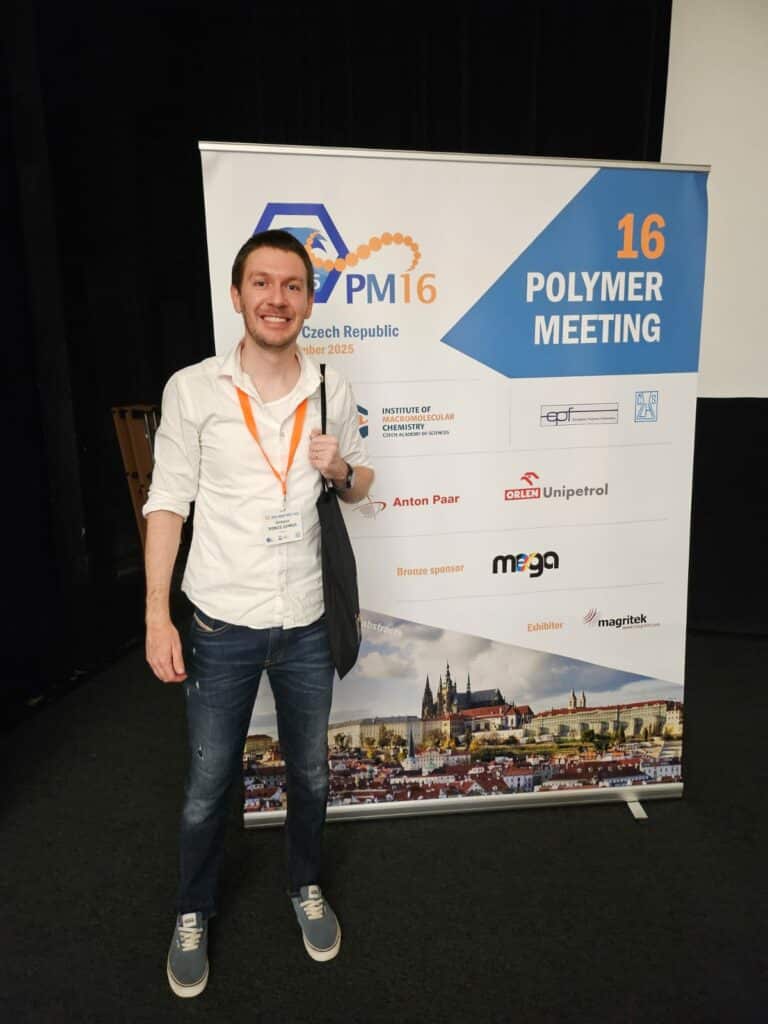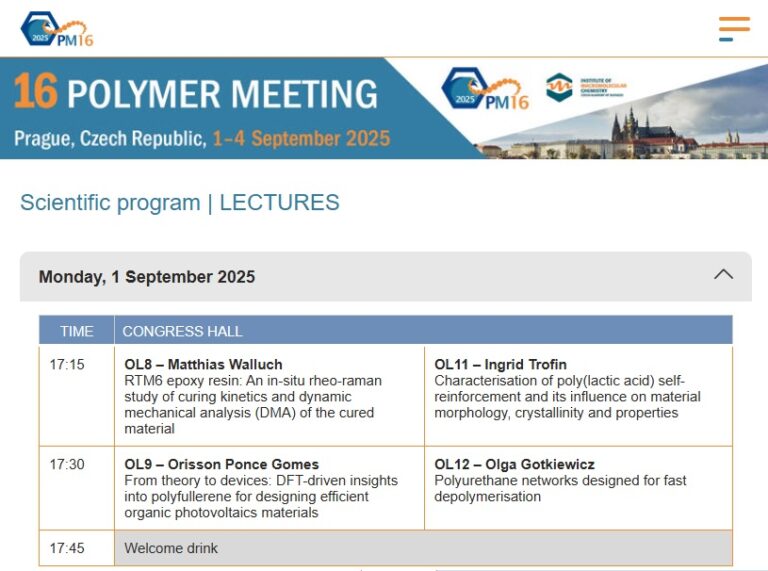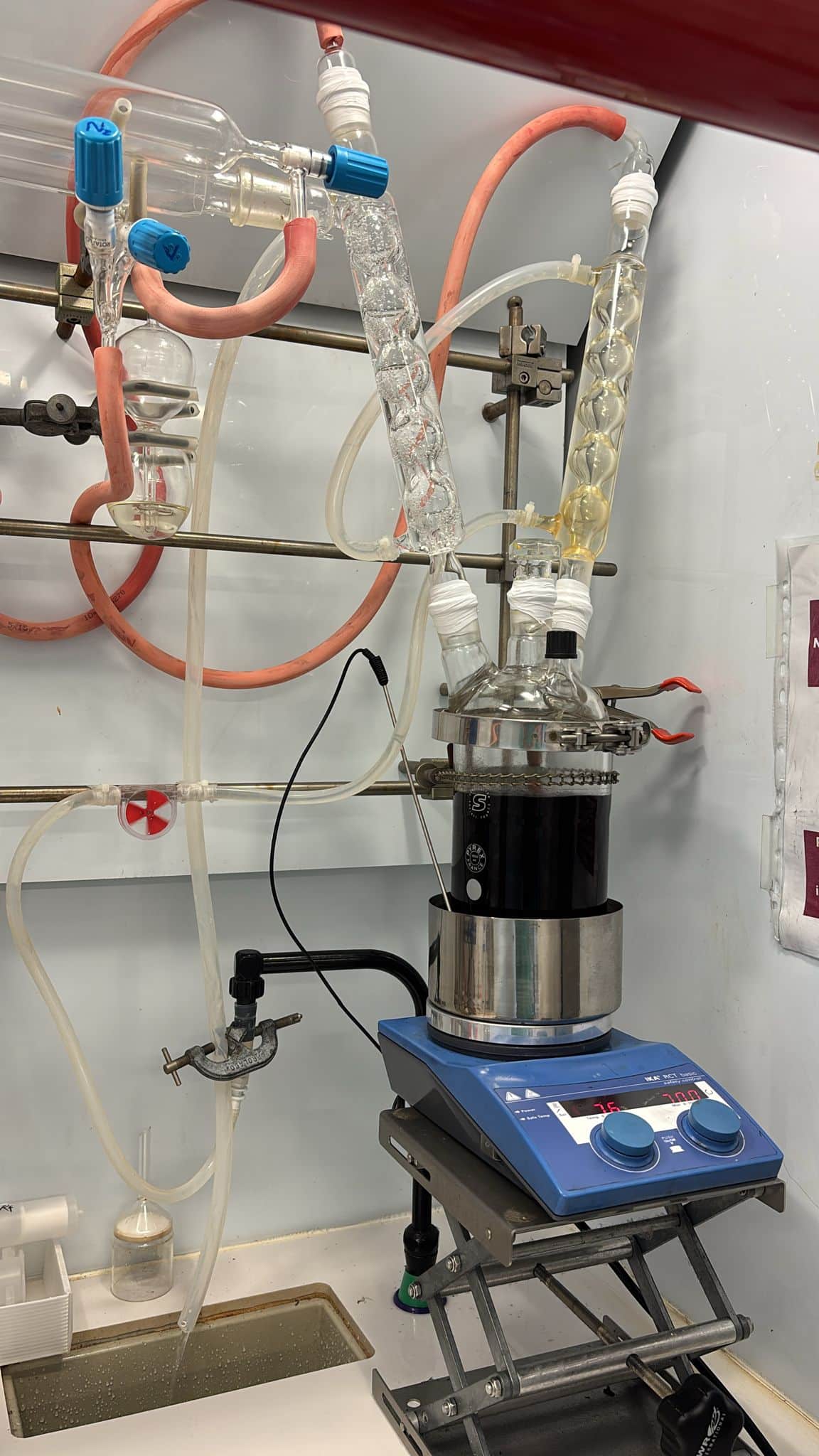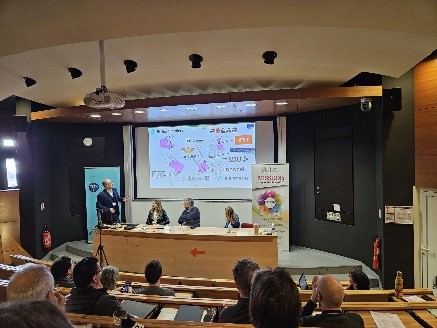A Glimpse into the Future of Solar Energy:
Insights from the 16th Polymer Meeting in Prague
By Dr Orisson Ponce Gomes, CNRS
2025 September 9th, Pau, France
Last week, from September 1st to 4th, the scientific community gathered in Prague, Czech Republic, for the 16th Polymer Meeting. This conference highlighted the latest advancements in polymer research, covering everything from fundamental chemistry to real-world applications in technology and sustainable materials. It was a fantastic opportunity to see how interdisciplinary and collaborative science is driving innovation forward.
I was pleased to present my work, which focused on using computational chemistry to pre-select promising polyfullerenes for next-generation organic solar cells. A key challenge in this field is developing the right polyfullerene material to make these solar cells more efficient. Testing every possible candidate in the lab can be time-consuming and expensive. This is where computer modeling becomes a powerful tool, helping us narrow down the best options before we even step into the laboratory.
In my presentation, I detailed the strategy I used for this pre-selection. The process started by using a method called DFT (Density Functional Theory) calculations. Think of this as creating a super-detailed digital map that identifies the most reactive parts of the molecules involved in the solar cell—the parts crucial for transferring electrical charge.
Once these key regions were mapped, I moved to a dynamic analysis using Molecular Dynamics simulations. This is like placing the solar cell components in a virtual box and making a movie of how they naturally move and interact with each other over time. The goal was to see if those crucial reactive regions we identified actually come close together, facilitating the charge transfer process that is essential for the solar cell to work efficiently.
This computational approach is a significant advantage. It allows us to intelligently guide our experimental colleagues, saving valuable bench time and resources by avoiding the synthesis of less promising materials. This work is an important part of the EFFECTOR project, which is dedicated to developing more efficient organic solar cells based on polyfullerenes.
The promising candidates identified through these simulations are now moving to the experimental stage, where my colleague Marco Gomes will synthesize the selected polyfullerenes. The final step will be building the actual solar cell devices and testing their efficiency, bringing us one step closer to better solar energy solutions.






